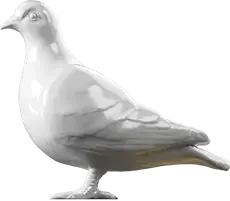Printed Ephemera — 1823
Ordered For Execution At the Old Bailey, on Wednesday, 26th November, 1823. John Smith, aged Twenty-four, for forging bank notes. John Crisp, aged Twenty-nine, for Burglary. John Hogan, aged Eighteen, and James Scott, aged Forty-eight, for Cutting and Maiming
Execution broadside giving an account of the trial and execution of the convicted criminals John Smith, aged 24, found guilty of forging bank notes, John Crisp, 29, guilty of a 'daring burglary' in Hackney Road, John [Edward] Hogan, for stabbing and cutting the throat of his fellow baker and James Scott, aged 48, found guilty of 'cutting and maiming' his wife with scissors in Regents Park. The broadside includes a generic woodcut engraving representing a crowd surrounding the gallows and includes a ballad and passages from the Bible condemning thieves and deceit. All four criminals were publicly executed at the Old Bailey on Wednesday, 26th November, 1823. John Crisp was, according to the Times linked to a notorious gang from the East End of London and already had several convictions for burglary.
Until 1868 public hangings were a popular form of entertainment for the London crowd. Such occasions provided an opportunity for cheap printers and street vendors to 'turn a penny on the street' by selling accounts of the crimes, trial and 'dying speeches' of executed criminals as souvenirs to the baying spectactors. As soon as the trap fell the street vendors began running amongst the crowd selling the broadsides. Execution broadsides were published by a small number of printers many of whom, such as Thomas Birt, James Catnach and James Pitts were based around the Seven Dials area of London. Spelling and grammar was often poor and the details not always accurate. Both The Times newspaper and the printer of this broadside mistakenly referred to the convicted criminal Edward Hogan aged 16 as John Hogan aged 18. Although ususally printed between the end of the trial and the date of the execution (usually a gap of a few weeks) they could be quickly changed to accomodate last minute information such as reprieves and dying confessions. The printers often used battered woodcuts, and, for the gallows scene used a stock block with a pierced central section to allow the sex and required number of hanging figures to be changed as required. Female criminals were depicted by using a block for a male figure, cut square at the knee to represent a skirt.
- Category:
- Printed Ephemera
- Object ID:
- A2147
- Object name:
- Ordered For Execution At the Old Bailey, on Wednesday, 26th November, 1823. John Smith, aged Twenty-four, for forging bank notes. John Crisp, aged Twenty-nine, for Burglary. John Hogan, aged Eighteen, and James Scott, aged Forty-eight, for Cutting and Maiming
- Object type:
- Artist/Maker:
- Catnach, James
- Related people:
- Related events:
- Related places:
- Production date:
- 1823
- Material:
paper
- Measurements/duration:
- H 380 mm
- Part of:
- —
- On display:
- —
- Record quality:
- 100%
- Part of this object:
- —
- Owner Status & Credit:
Permanent collection
- Copyright holder:
digital image © London Museum
- Image credit:
- —
- Creative commons usage:
- —
- License this image:
To license this image for commercial use, please contact the London Museum Picture Library.
